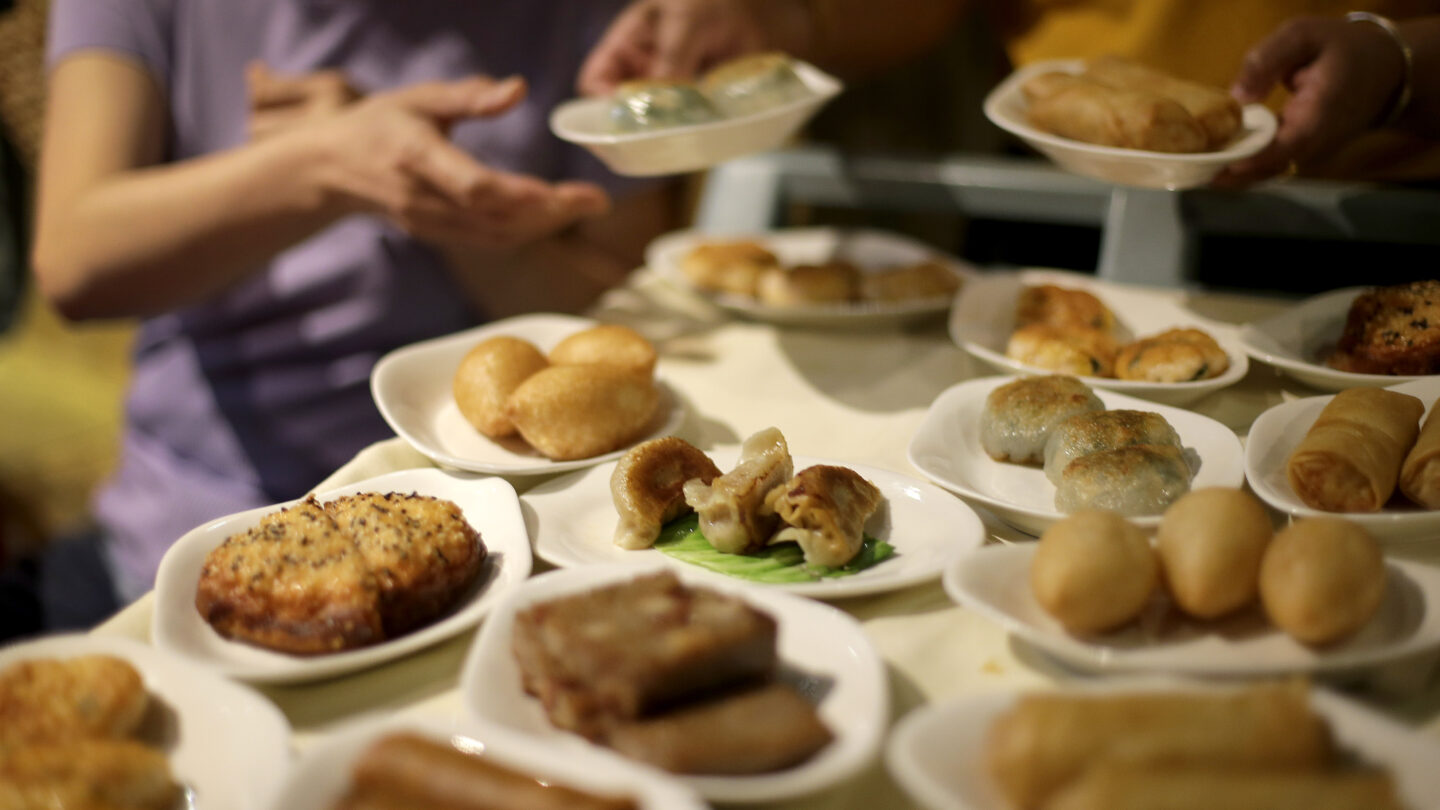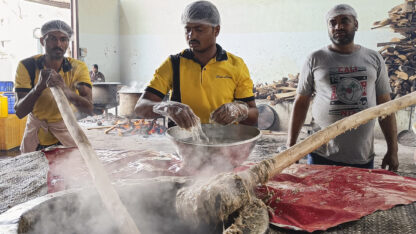Adron McCann
, Summer Evans
| WABE
May 5th, 2022
We’ve known for a long time now that Atlanta’s food scene goes far beyond BBQ and fried chicken. Our city has food offerings as diverse as its population. Today, we debut “Atlanta’s Savory Stories,” a new series about our area’s rich culinary history, some restaurants and recipes to try from the comfort of your own home. Today, WABE introduces its new food contributors, culinary historian Akila McConnell and chef Asata Reid.
Our premiere episode focuses on our Chinese-American food community for Asian-American Pacific Islander Month. McConnell explained the most common misconception about Atlanta’s Chinese food — that it’s relatively new here. ”We hear a lot about America’s historic Chinese communities in places like New York and San Francisco, but not in Atlanta,” she said. “But the reason that there was an influx of Chinese immigration nationwide in the 1800s also impacted Atlanta, and that reason was, of course, the railroad.”
When the railroads became the trade nexus that gave rise to Atlanta’s first wave of growth as a city, Chinese immigrants joined them. By 1865, Chinese workers made up 90% of those employed in building the first Transcontinental Railroad. As their families grew, the community established what was then called “Atlanta Chinatown” in 1903, with pioneering Chinese restaurants like Joe Jung’s Chop Suey Restaurant and Oriental Café.
“His restaurants were the first to introduce Chinese cuisine to Atlanta, and it honestly isn’t all that different than what you might find on a menu today. His … specialty dish, let’s say, was chop suey,” said McConnell. “Historians don’t know exactly where this dish came from. Some people say that actually, it means just ‘a pile of leftovers’ … but it is basically today what we would consider a stir fry.”
A century later, Chinese and Chinese-American cuisines are staples of the Atlantan palette. The distinction between the two realms of cuisine is essential because Chinese-American food culture has created dishes unique to the United States. For example, Reid noted the dish General Tso’s chicken, a recipe that was only ever found in China long after its creation and popularization in America.
Chef Reid recalled a formative experience, a traditional Chinese wedding she was taken to as a child. “We were invited to the dinner, which was this amazing 10-course feast that I will never forget … Stunning food, artfully presented and elegantly served, and the flavors — everything was so distinct yet harmonious.” She added, “And I have never forgotten the betrayal I felt afterwards, because if that was Chinese food, then what had I been eating? My whole life was a lie.”
Here are some of Reid and McConnell’s selected Chinese restaurant favorites in the metro-Atlanta area:
Hai, Decatur: “If we’re getting dumplings, then we get it from Hai … Their dumplings are just spectacular.” – Reid
Dim Sum Heaven, Buford Hwy: “It’s got all your dim sum favorites right off a menu. So no rolling carts — you just order what you want.” – Reid
Oriental Pearl, Chamblee: “I’m old-fashioned. Oriental Pearl, that’s my choice … Whatever they bring out is going to be delicious.” – McConnell
Harmony Vegetarian, Buford Hwy: “I swear to you some of the foods that they serve there, you would not know that you were not eating meat.” – Reid
Wei Authentic Chinese Cuisine, Marietta: “The most wonderful mapo tofu and soup dumplings.” – McConnell
Ming’s B.B.Q., Gwinnett: “In my house, we are not opposed to driving 40 minutes to get barbecue duck from Ming’s.” – McConnell
Reid’s recommendations for creating dumplings at home:
- Keep the dough moist, so the wrapper doesn’t dry out.
- Don’t overstuff them, fill each dumpling only two-thirds of the way
- Keep the filling chilled until it’s time to cook
- Keep crispy dumplings crispy by not moving them when they’re frying in the pan with oil
- Steam them for three to five minutes afterward, and let the water evaporate out
- When making the mix, don’t add water to vegetables. Salt them in a colander and squeeze excess water out, or add cornstarch to veggies and that soaks up extra water
- Cook off a little bit of filling, and add fresh ginger to the mixture inside
- Find the correct wrapper (square wonton wrapper) and push out any air bubbles when wrapping them
- Natalie Keng’s Chinese Southern Belle makes Reid’s favorite “My Sweet Hottie” sauce for dipping the dumplings









